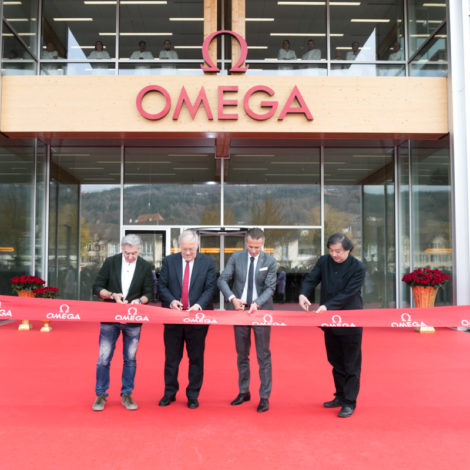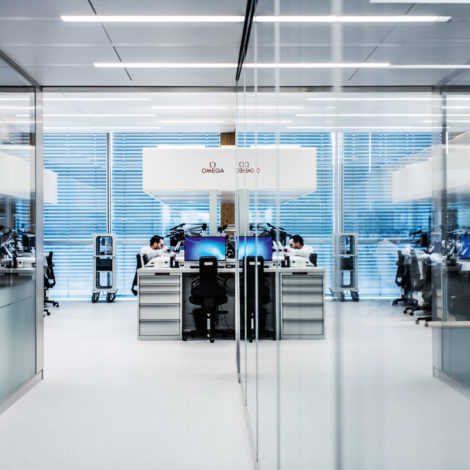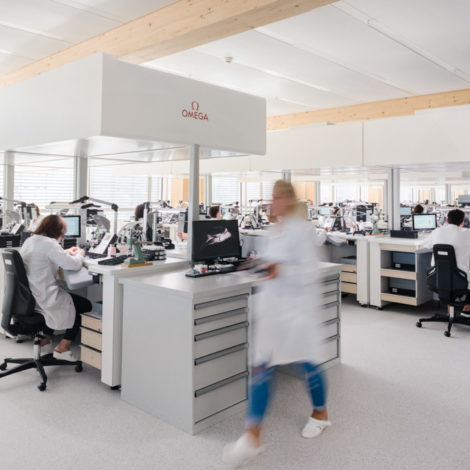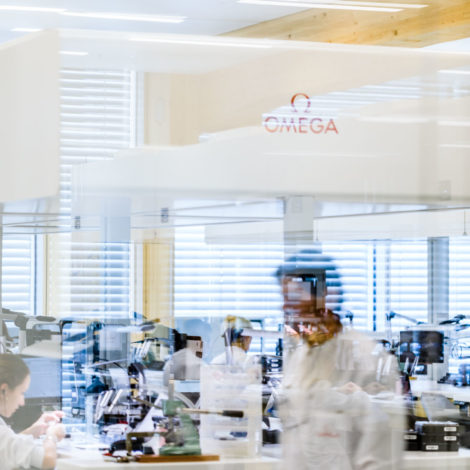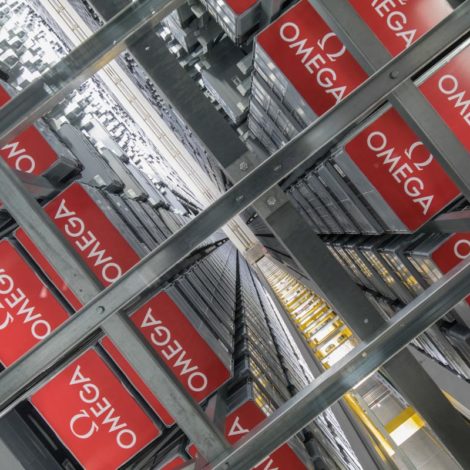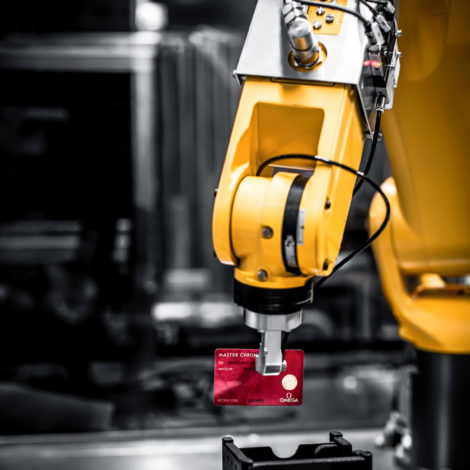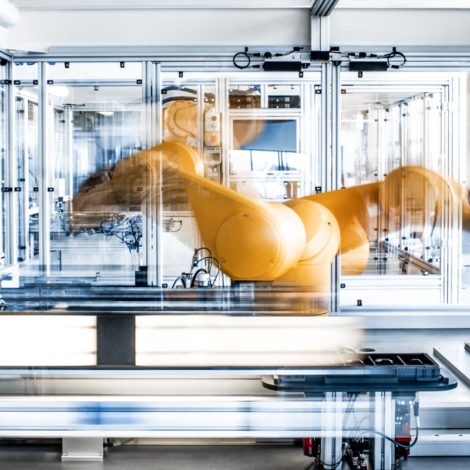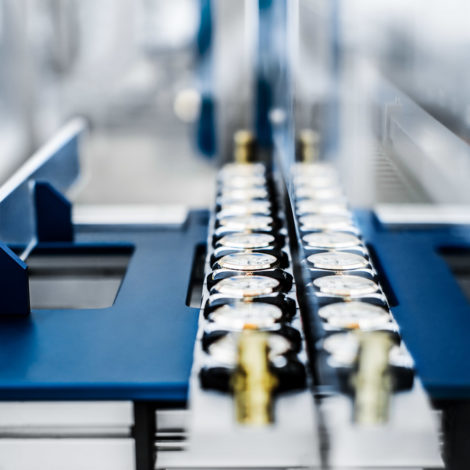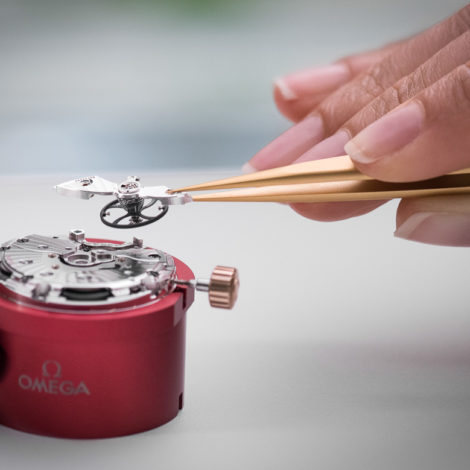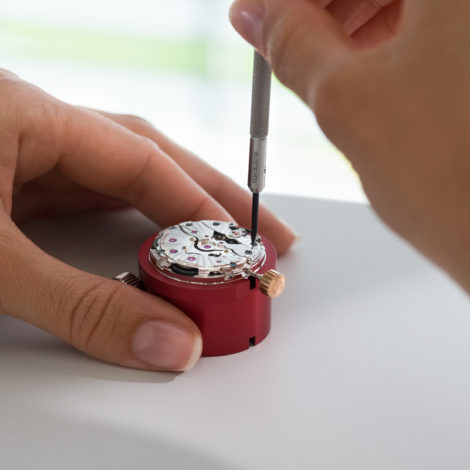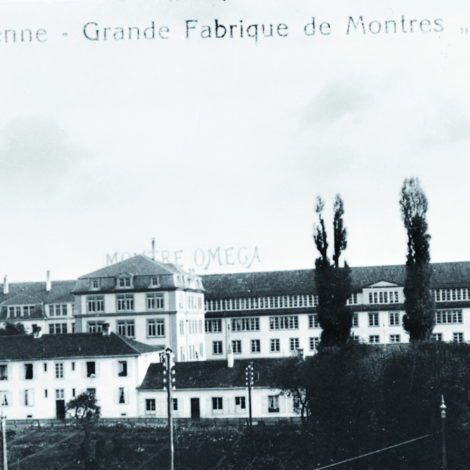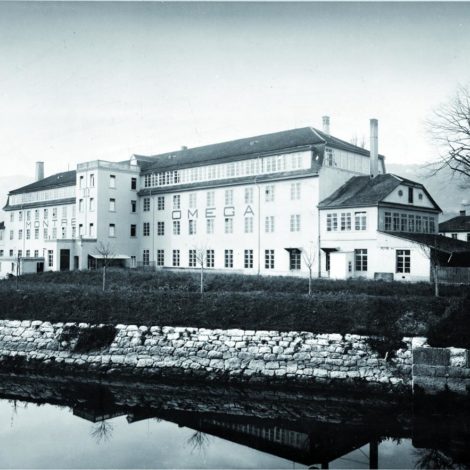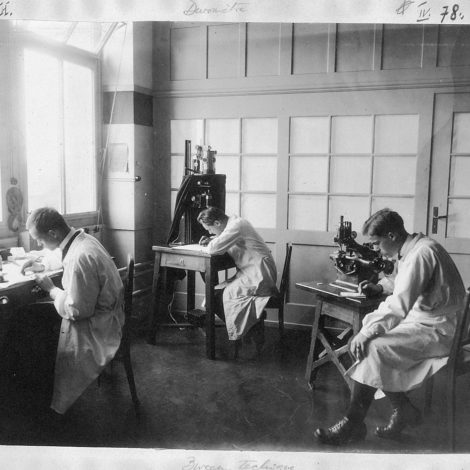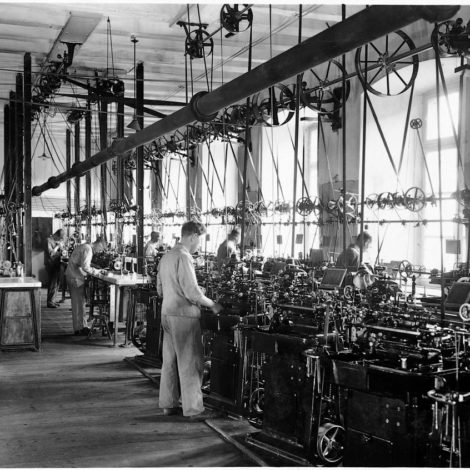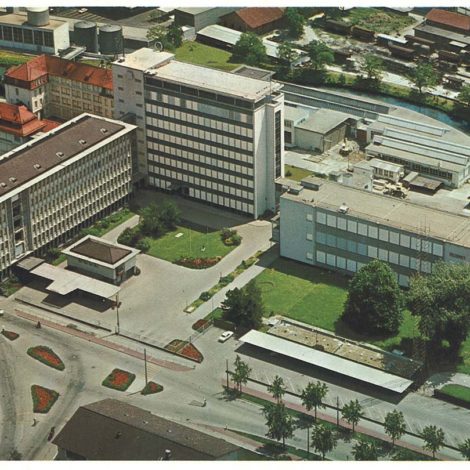
Western modernism meets some of the stylistic cues of Japanese architecture, energized further by Shigeru-san’s love for combining the eternal beauty of timber with more modern materials – even all the wood in the structure is from Switzerland. Omega mentioned, “the entire volume of timber used in the Omega production building corresponds to just 2.6 hours of tree growth in Switzerland.”
The 5-story building was designed like a wrapper around an ultra-sophisticated automated inventory system shielded in the middle. The lobby is as impressive as it is welcoming and, truth be told, objectively manic. An almost laughably long front desk, along with the vast concrete walls and the sheer amount of space and light make you feel like you’ve entered the Starship Enterprise that for whatever reason is carrying massive logs of Swiss timber… While the proudly exposed Omega-burgundy drapes do make it all feel eerily friendly and familiar.

Upon entering, you likely won’t have the faintest idea that one of the most impressive features of the new Omega factory is hiding behind the nearest concrete wall, just a few steps away. Proof to the fact that the new Omega Factory is a logistics power house, the central stock inside the very core of the new Omega Factory is a fully automated storage system that rises up through 3 floors of the building – though it has to be said that three floors in such a factory would accommodate more like 5 or more floors in an block of flats.
In a smart move, Shigeru-san has made room for some windows in the side as well as on top of the storage room, allowing visitors to peek inside and witness what looks like a scene from a science fiction movie. Some 30,000 Omega-labelled boxes, systematically stored on thousands upon thousands of shelves arranged on both sides of two alleys make for a dizzying sight… But only so until you see the two entirely automated robotic delivery systems as they charge up and down their respective alleys at mind-blowing speeds.
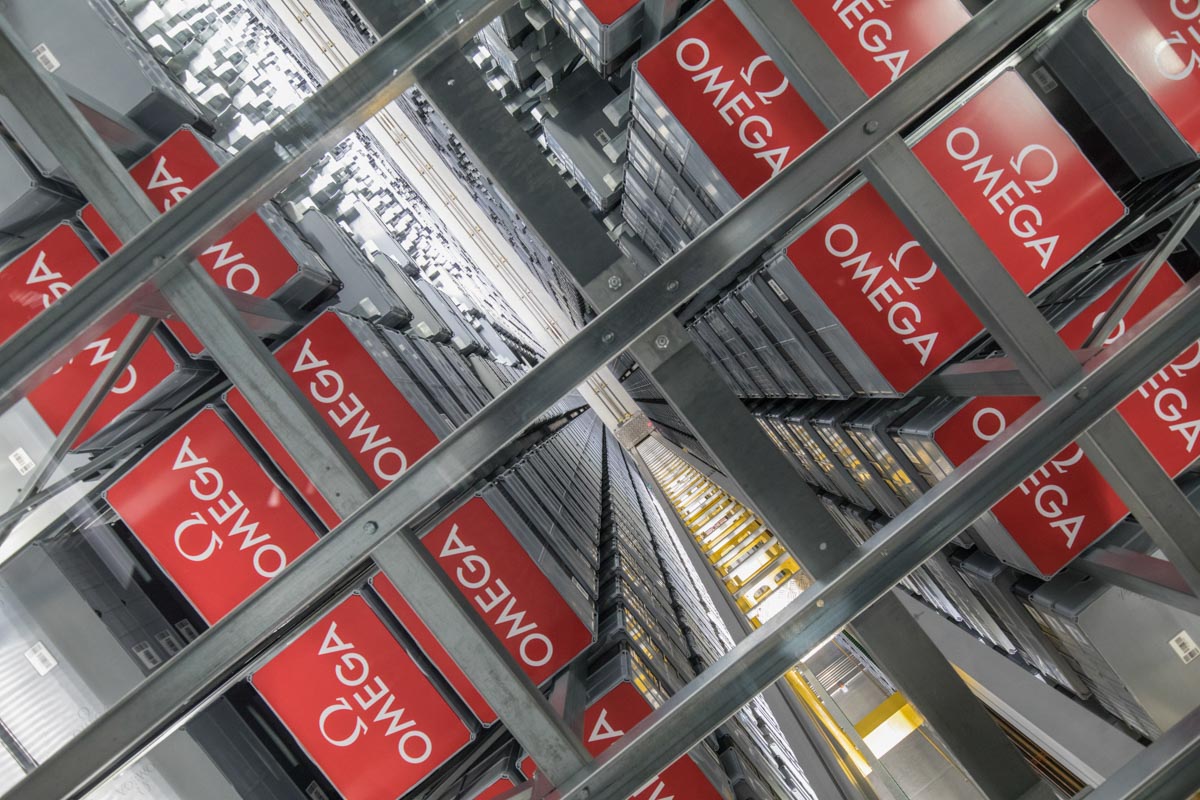
At 27.4 meters long, 9.4 meters wide and 14.2 meters high (that’s 89 by 31 by 47 feet), this vast space has an artificially lowered and strictly maintained oxygen level of just 15.2%, down from the normal 20.9%. This is the equivalent to what you’d experience at an altitude of 3,000 meters (9,000 feet). To ease the minds of those with a more extensive knowledge of physics or hiking, we know that natural air always contains around 21% oxygen, but at higher altitudes, as air pressure drops, a given volume of air will have fewer elements in it – including oxygen. This is based on the 350 year-old Boyle-Mariotte law – Omega didn’t burden us with this information but we did look it up.
In practice, this lowered oxygen level is maintained to drastically reduce the chances of fires inside what is essentially a vault containing tens of thousands of very expensive Omega watch components. The downside to it all is that there are only two specially trained people who are authorized to enter the new Omega Factory’s central stock system to perform maintenance work.

The central stock system can perform up to 1,400 operations per hour and was designed and integrated into the factory itself in a way so that anyone, irrespective of his or her position inside, can get the required part in under 2 minutes – usually much less than that. The Omega Factory also claims 100% traceability of every component at every stage of its life from the moment it’s stocked through when it is requested, all the way to specifically when and where and into what it has been fitted. Watchmakers and all other staff had what appeared to be Microsoft Surface tablets fitted to their workstations, allowing them to request parts directly from the central stock, download assembly charts, keep track of their progress, and so on.
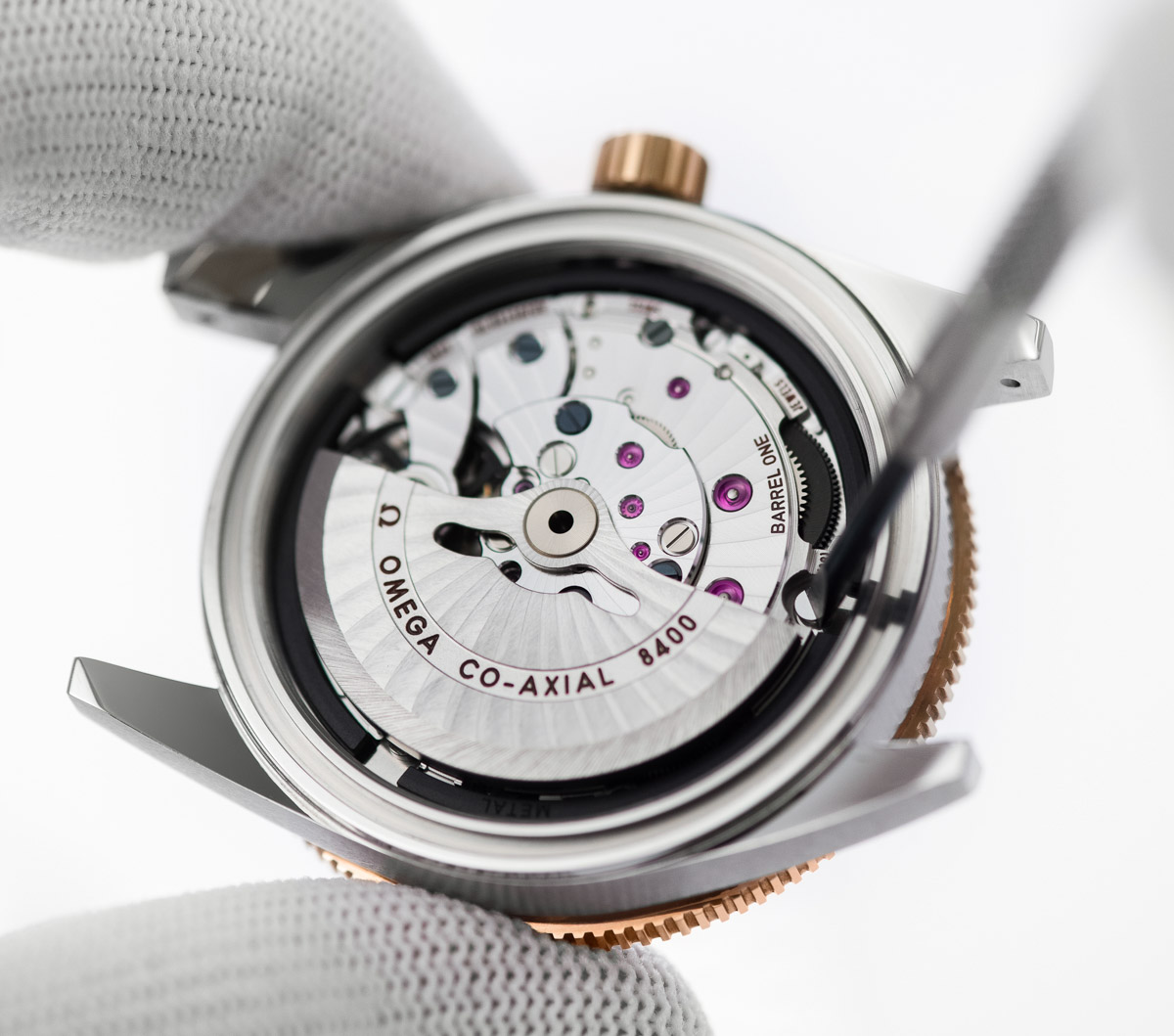

Omega values the wisdom in appreciating that no automated solution will ever be developed that can replace the value a human touch brings to producing a fine timepiece – even in numbers. Machines assist Omega’s carefully trained watchmakers to emphasize attention on their work to assemble and test each timepiece that leaves the factory en route to customers.
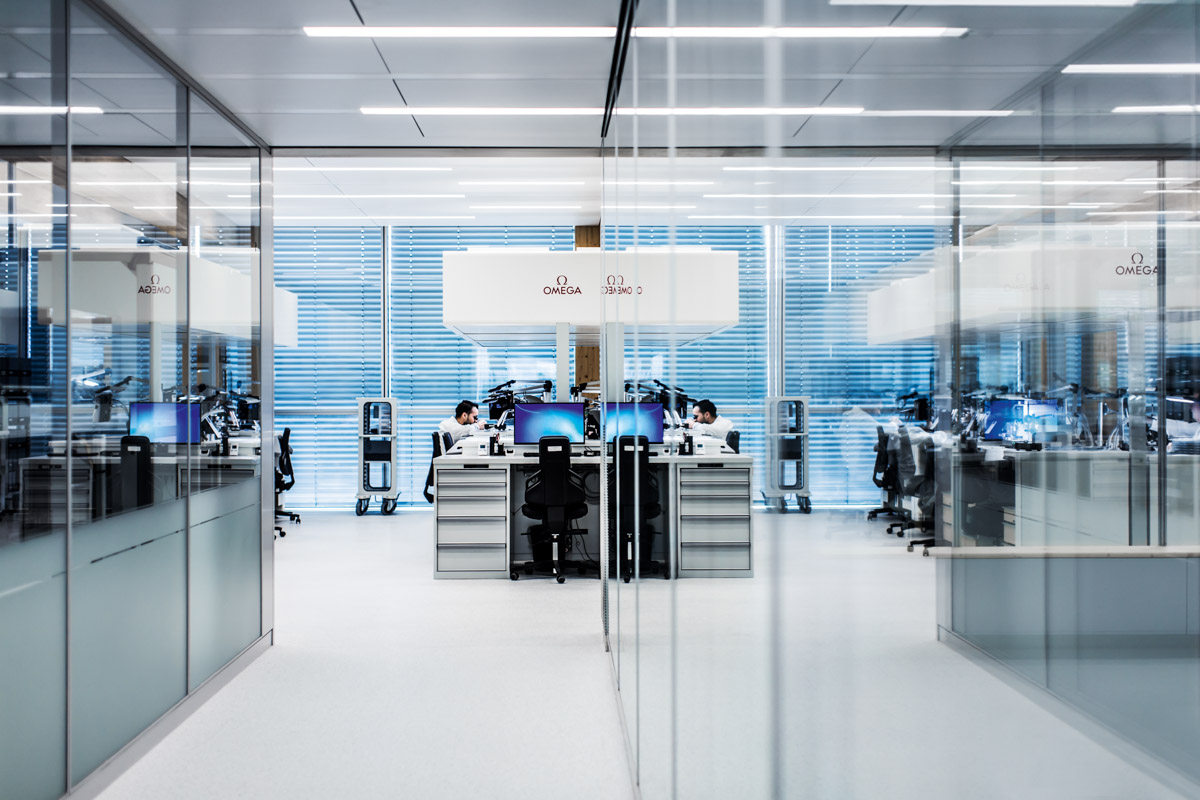
This deep focus on the human element of the Omega Watch Factory extends into practices designed to enhance ergonomics and workplace comfort. Along with the new factory, Omega also debuted new, specially-designed watchmaker’s workbenches with adjustable heights and seating positions. Making use of the aforementioned paperless information system, Omega’s watchmakers are among the best-equipped in the industry, with perhaps the most organized and clean working environments available.
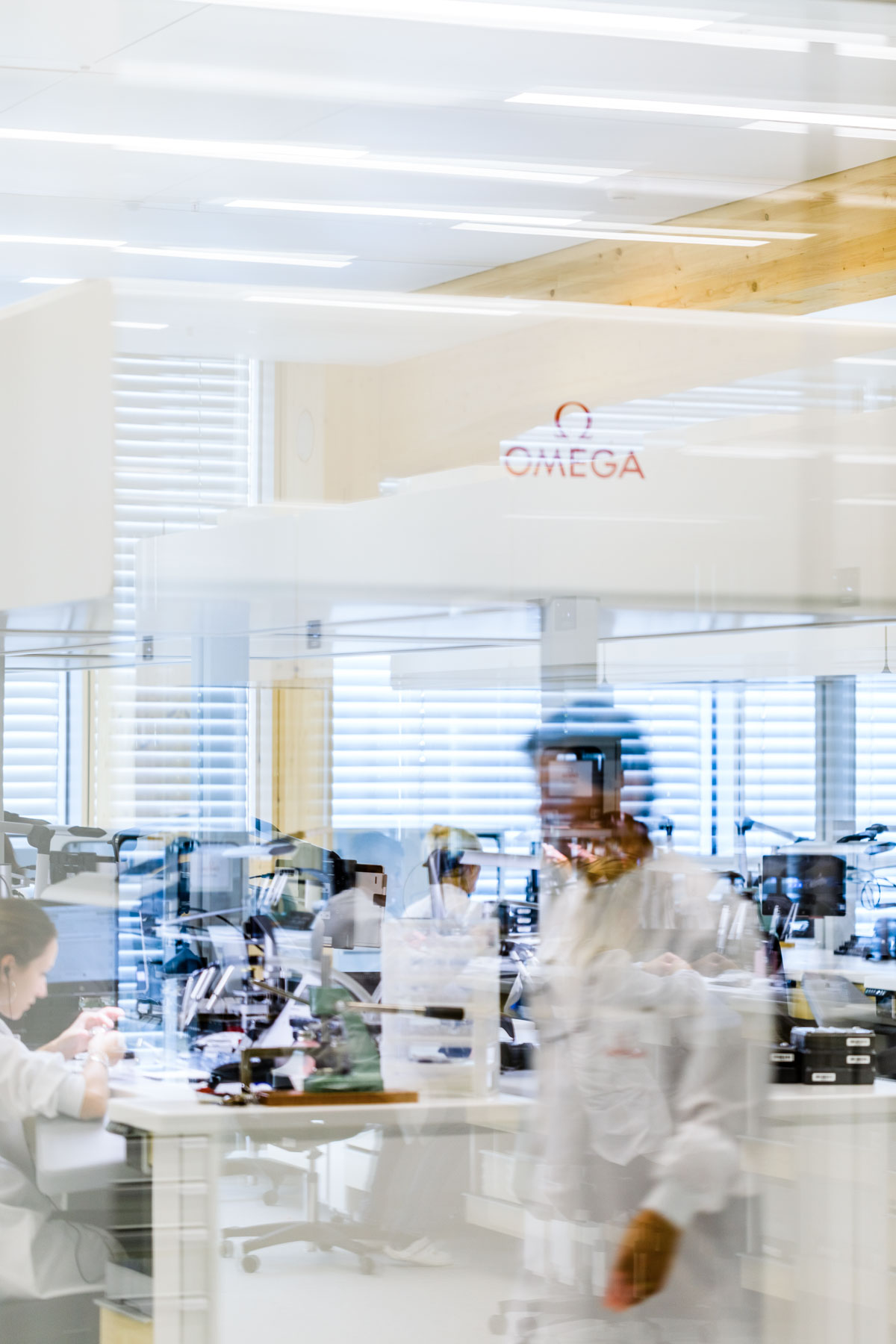
An active filtration system in all watchmaker areas is part of Omega’s commitment to making all aspects of high quality watch production as easy and worry-free as possible. Air flows down from the ceilings into floor vents pushed through filters so fine they are claimed to catch not only dust particles but even viruses. This filtration system ensures air that is good to breathe, but also air that is free from dust and any other particles that might land on a watch movement or dial, affecting both performance and aesthetics.

In order to protect customer products and to ensure the cleanest possible work environments, the new Omega Watch Factory contains a central viewing area for its thousands of visitors each year. Visitors can view the various stages of the watch movement assembly and testing process through protective glass, while not disturbing the workflow of watchmaking teams.
An office within the Omega Watch Factory was dedicated to the Swiss government. Omega is currently the only watchmaking facility to test movements under METAS standards. One rule of this industry-leading set of tests is that the Federal Institute of Metrology have an onsite office to ensure compliance with strict standards of precision and testing consistency.
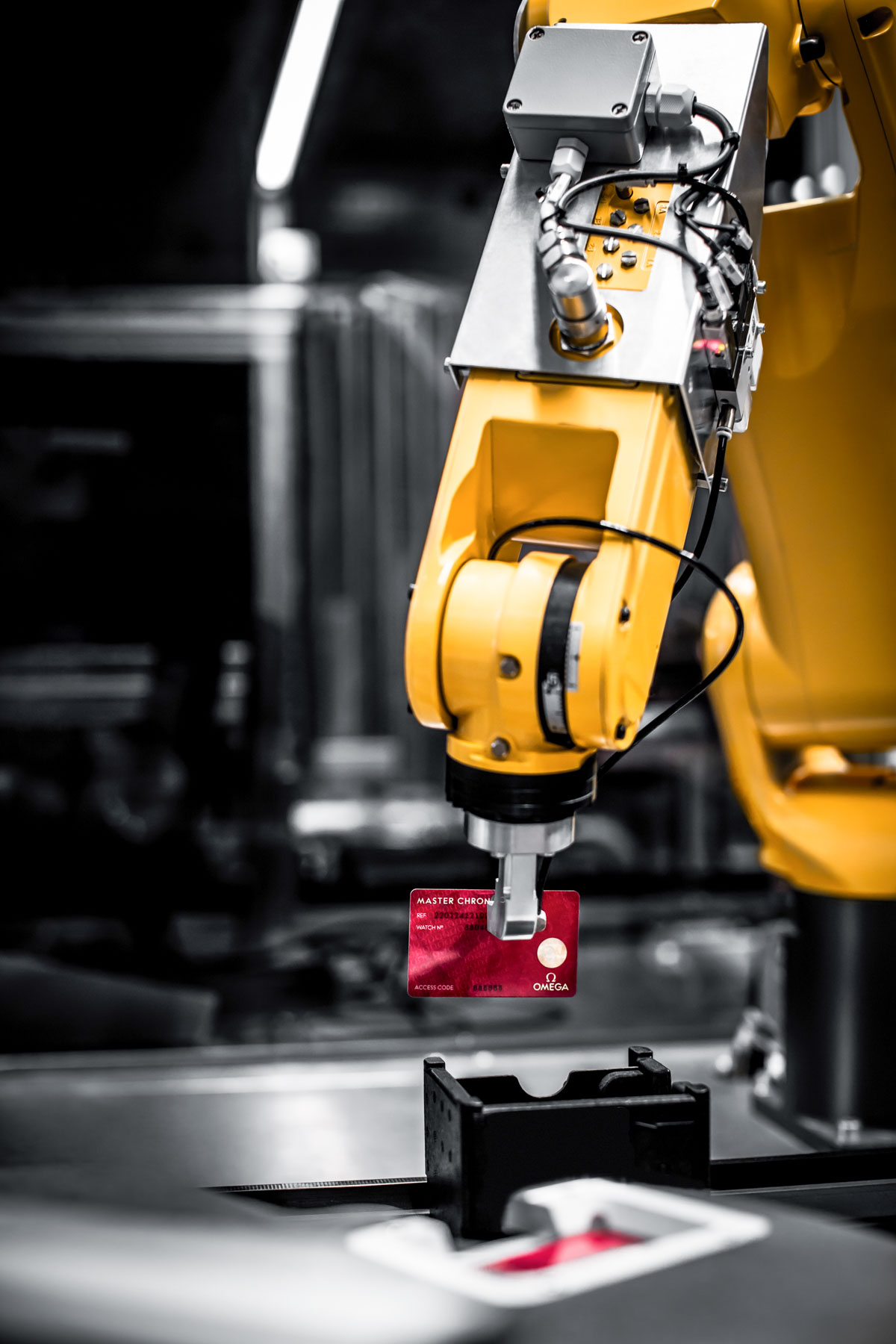
This METAS certification that applies to every Omega watch dubbed a Co-Axial Master Chronometer wouldn’t be possible for most watches as they don’t contain Omega’s special mix of non-magnetic movement components. Magnetic resistance is among the many important standards a complete watch must pass in order to receive the certification. Only Omega’s Co-Axial Master Chronometer movements – produced at the Omega Factory – can currently pass METAS certification standards.
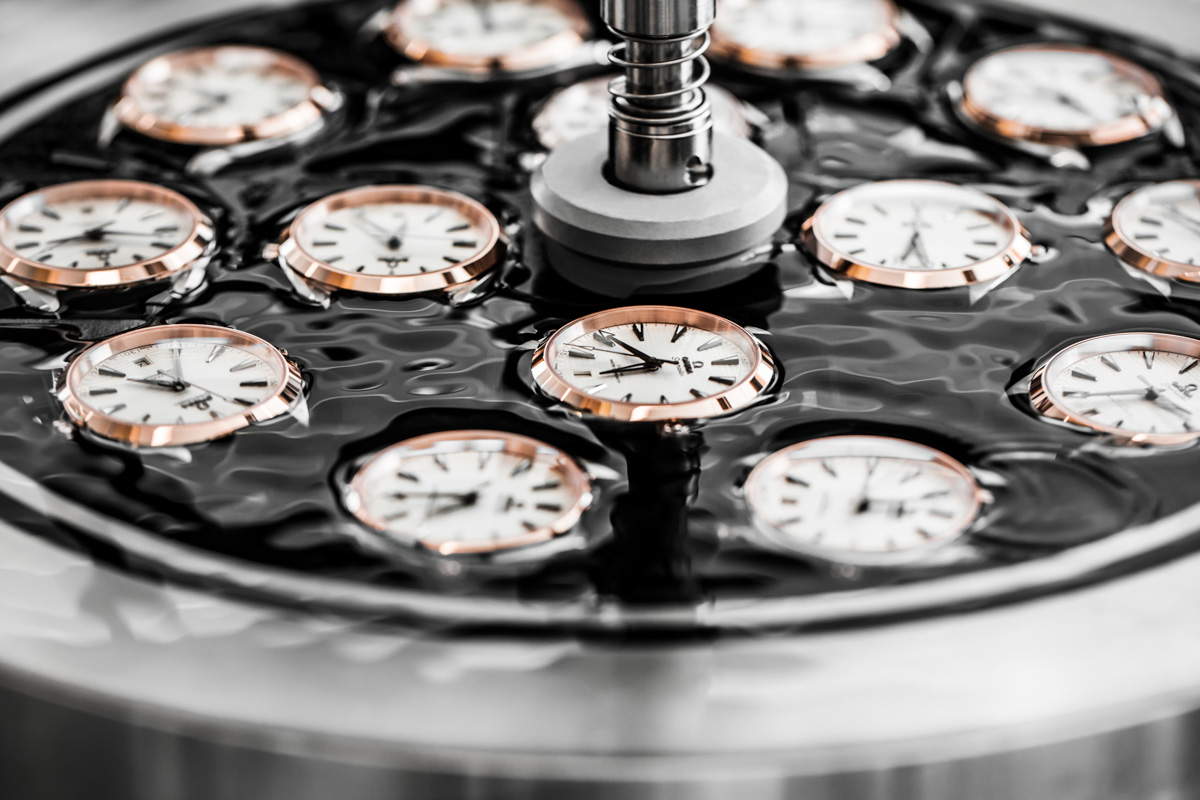
One area where automated mechanisms are welcome replacements for human labor is in long-term wear performance testing. Each METAS certified timepiece produced by the Omega Factory has undergone 14 days of simulated wear. Omega’s engineers developed new machinery to simulate the motion of a wrist wearing a timepiece for a fortnight’s time.
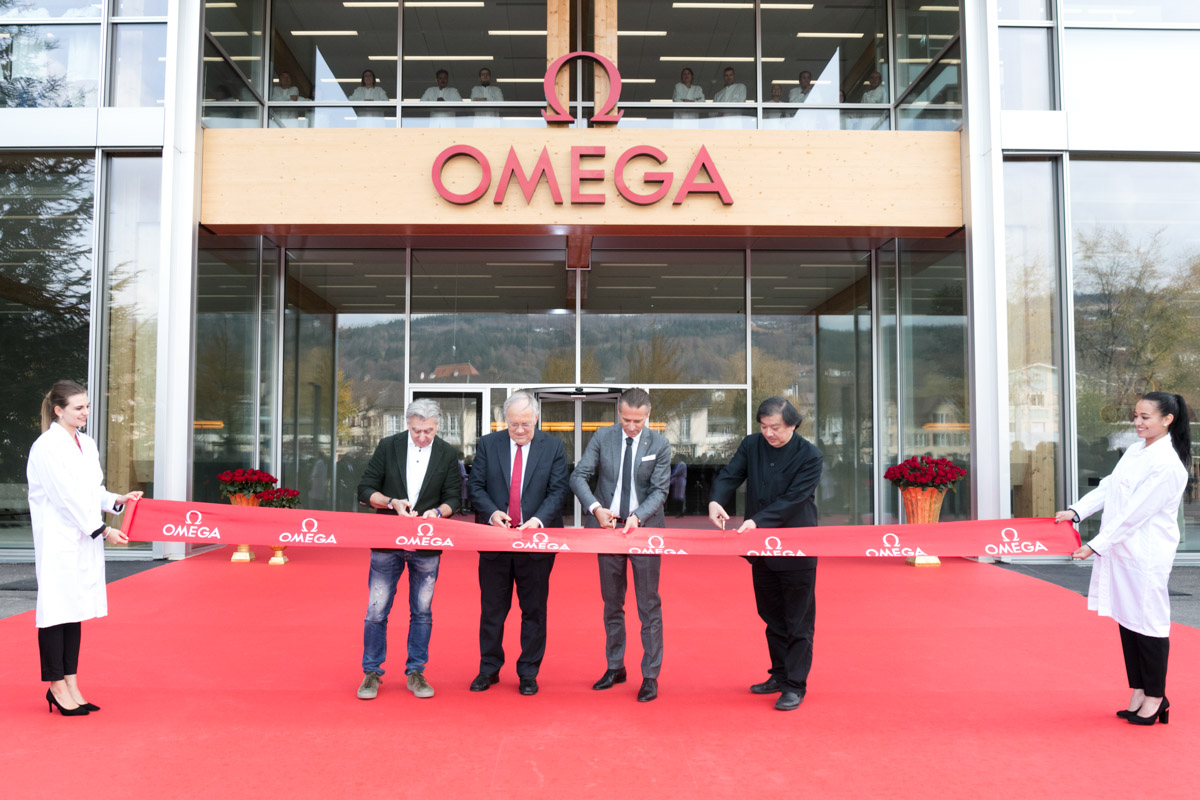
The opening ceremony, left to right: Nick Hayek, 3rd is Raynald Aeschlimann, Omega’s CEO, and fourth is Shigeru Ban, the architect.
Brilliantly yet tastefully lit at night, the Omega Watch Factory shall deliver on its promise to allow Omega to eventually raise their watch production capabilities, while increasing overall quality, long-term performance, as well as human comfort for its staff and production team. A landmark architectural design practically ensures that the new Omega Watch Factory will inspire the next generation of watch lovers and watchmakers, while providing today’s discerning consumers with Omega’s finest wearable heritage. omegawatches.com



